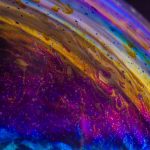What is melasma?
Melasma (from the Greek word, ‘melas’ meaning black) is a common skin condition formed of dark, discoloured patches of pigment. It can be disfiguring and makes the skin appear older than it should be. Some dermatologists also call it chloasma, (from the Greek word, ‘chloazein’ meaning ‘to be green’) or the “mask of pregnancy,” because it sometimes occurs in pregnant women.
The condition is much more common in women. Men can have it as well. According to the American Academy of Dermatology, 90 percent of people who develop melasma are women.
Symptoms of Melasma
Melasma causes patches of discoloration which are often described as hyperpigmentation. The patches are darker than most typical skin color. It typically occurs on the face and is symmetrical, with matching marks on both sides of the face. Other areas of your body that are often exposed to sun can also develop melasma.
Brownish colored patches usually appear on the:
- cheeks
- forehead
- upper lip
- bridge of the nose
- chin
It also occurs on the neck and forearms but less so. The skin discoloration doesn’t do any physical harm, but you may feel self-conscious about the way it looks.
If you notice these symptoms of melasma, see your healthcare professional. They might refer you to a dermatologist, a doctor who specializes in treating skin disorders.
Causes and risk factors
The causes of melasma are unclear. The condition appears in all racial types. Surprisingly, darker-skinned individuals are more at risk than those with fair skin. On this basis of skin colour, it occurs more frequently in those persons with Fitzpatrick skin types IV to VI who live in areas of high ultraviolet radiation. Hyperpigmentation is the most common pigmentary disorder among Indians. Sun exposure deepens these hyperpigmented areas.
Estrogen and progesterone sensitivity are also associated with the condition. This means pregnancy, birth control pills, and hormone therapy can all trigger melasma. Stress and thyroid disease are also believed to be causes of melasma.
Additionally, sun exposure can cause melasma because ultraviolet rays affect the cells that control pigment (melanocytes).
How is melasma diagnosed?
A visual exam of the affected area is often enough to diagnose melasma. To rule out specific causes, your healthcare professional/dermatologist might also perform some tests.
One testing technique is a Wood’s lamp examination. This is a special kind of light that’s held up to your skin. It allows your healthcare professional to check for bacterial and fungal infections and determine how many layers of skin the melasma affects. To check for any serious skin conditions, they might also perform a biopsy. This involves removing a small piece of the affected skin for testing.
Is it treatable?
Treatment often involves the use of topical hypopigmenting agents, such as hydroquinone (HQ), tretinoin (RA), kojic acid, and azelaic acid. These compounds are incorporated into creams. Your healthcare professional or dermatologist can prescribe that can lighten the skin. They might also prescribe topical steroids to help lighten the affected areas.
Physical therapies, such as chemical peels incorporating glycolic acid [GA] and trichloroacetic acid [TCA]), laser therapy and dermabrasion, similar to that used in other hyperpigmentary disorders, have also been tried with varying degrees of success.
If these don’t work, chemical peels, dermabrasion, and microdermabrasion are possible options. These treatments strip away the top layers of skin and may help lighten dark patches.
These procedures don’t guarantee that melasma won’t come back, and some cases of melasma can’t be completely lightened. You might have to return for follow-up visits and stick to certain skin treatment practices to reduce the risk of the melasma returning. These include minimizing your sun exposure and wearing sunscreen daily.
For some women, melasma disappears on its own. This typically occurs when it’s caused by pregnancy or birth control pills.
Coping and living with melasma
While not all cases of melasma will clear up with treatment, there are things you can do to make sure the condition doesn’t get worse and to minimize the appearance of the discoloration. These include:
- using makeup to cover areas of discoloration
- taking prescribed medication
- wearing sunscreen every day with SPF 30
- wearing a wide-brimmed hat that shields or provides shade for your face
Wearing protective clothing is especially important if you’ll be in the sun for an extended period of time.
If you’re self-conscious about the pigmentation, talk with your healthcare provider about local support groups or counselors. Meeting other people with the condition or talking with someone can make you feel better.



Leave a Reply